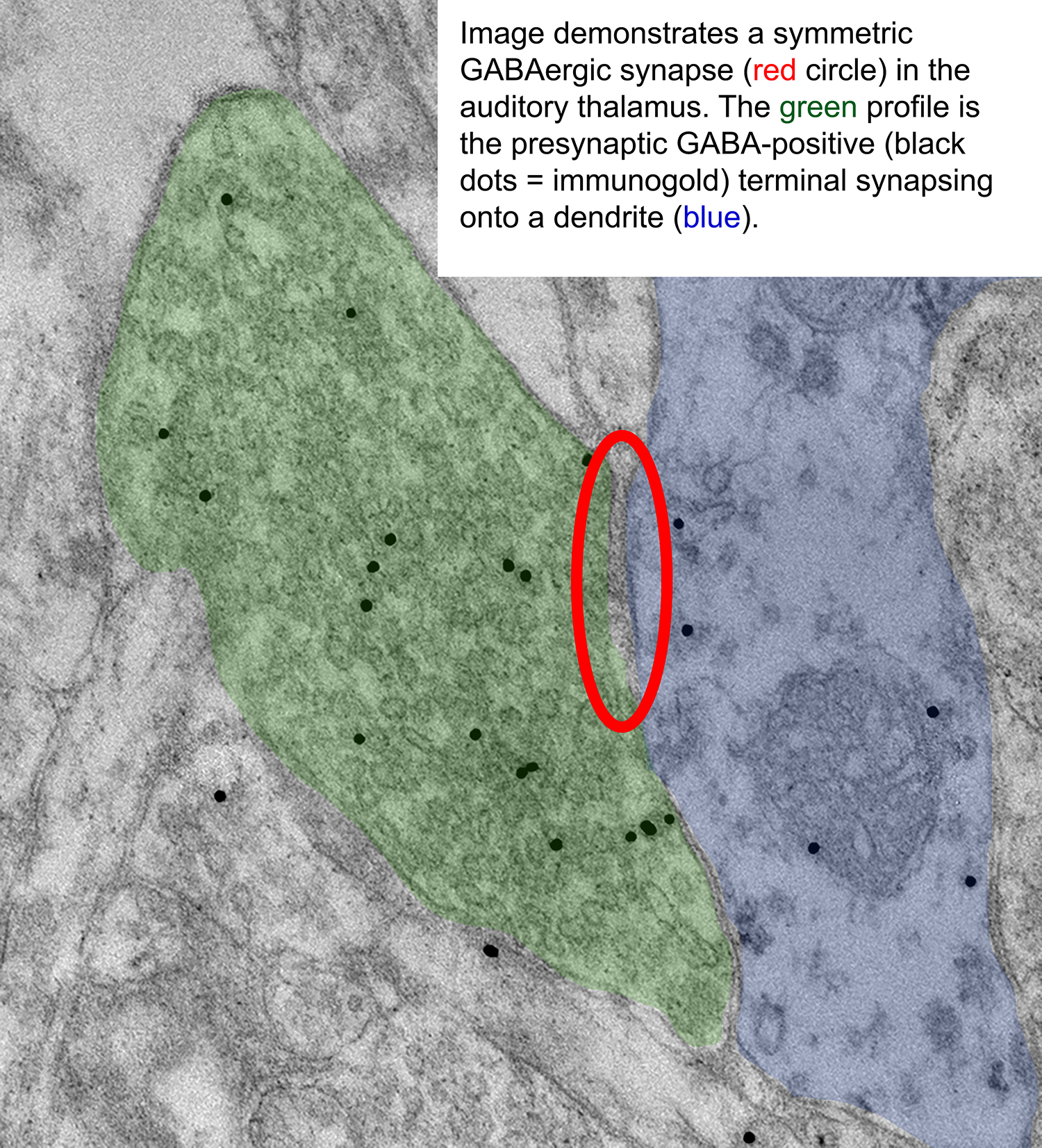Tiered Mentoring ProgramSynaptic changes in the Auditory Thalamus during Middle and Old AgeDr. Jeffrey Mellott, Associate Professor of Anatomy and Neurobiology at NEOMED |
 |

Note: Any student chosen for this project will be responsible for providing their own transportation to Northeast Ohio Medical University (NEOMED).
Our lab examines the synapses of the aging auditory nuclei. As you age, inhibition is downregulated across the brain in both a compensatory and maladaptive fashion. In the auditory midbrain, inhibition is initially downregulated to compensate for the loss of excitation due to damaged hair cells in the cochlea. However, the continued loss of inhibition at old age leads to temporal processing deficits that contribute to age-related hearing loss. One of our primary goals is to better understand how synapses are changing during middle age, (when hearing deficits are not common), and old age (when hearing deficits are very common) in the auditory thalamus in response to the altered brainstem circuitry.
To accomplish our goals we use a variety of anatomical and microscopic techniques. Specifically, for the proposal below, we use immuno transmission electron microscopy to examine synapses at the ultrastructural level to detail changes to the balance of inhibitory and excitatory synapses, the synaptic length, bouton size, mitochondria morphology, the number of vesicles, and postsynaptic targeting.
The downregulation of inhibition/GABA in the aging central auditory system underlies characteristic of age-related hearing loss. In particular the poor temporal processing often seen in the elderly. While many investigations of altered GABAergic neurotransmission have focused on the auditory midbrain and cortex, physiological investigations have demonstrated that GABAergic processing in the auditory thalamus is also interrupted with age. The auditory thalamus is critical to modulate, code, and gate acoustic stimuli and speech within specific contexts. Whether GABAergic changes are occurring at a synaptic level withing the auditory thalamus is unknown.
The primary goal of the student will be to learn how to characterize neural ultrastructure in the auditory thalamus. The student will analyze properties of the pre- and postsynaptic elements and analyze myelination on populations of axons. If time permits, the student will attend weekly meetings, and may also present a paper to the lab once per semester. Once proficient with the analysis, the student may be trained on tissue processing for immuno electron microscopy if they remaining the lab from year to year.
